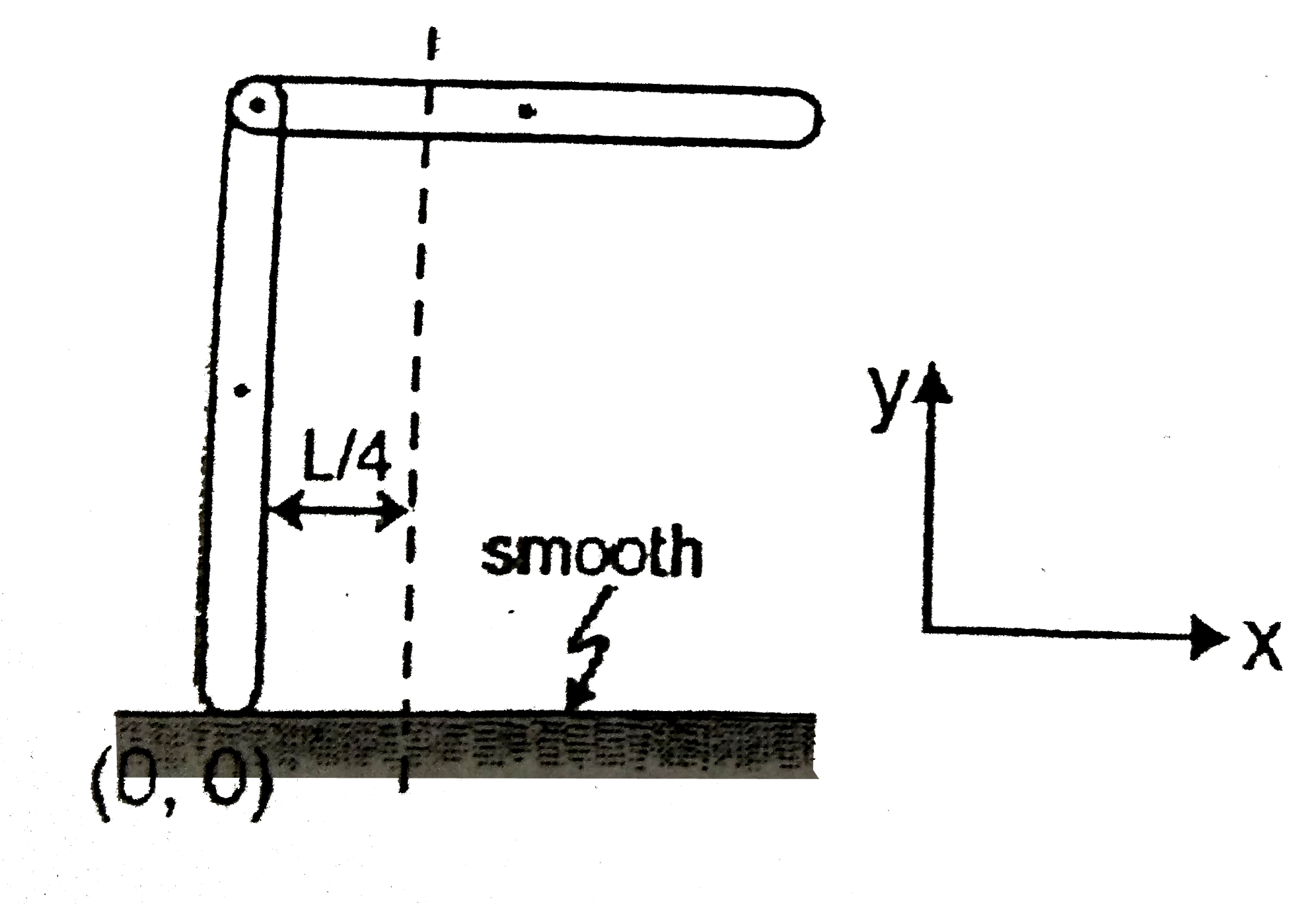Correct Answer - B::D
Initailly the centre of mass is at `(L)/(4)` distance from the vertical rod.
`(As, x_(cm)=(m((1)/(2))+m_(0))/(m+m)=(L)/(4))`

centre of mass does not move in `x-` direction as `Sigma F_(x)=0`.
After they lie on the floor, the pin joint should be at `L//4` distance from the origin shown inorder to keep the centre of mass at rest.
`:. `Finally `x-` displacement of the pin is `(L)/(4)` and `y-` displacement of the pin is obviosuly `L`.
Hence net displacement `=sqrt(L^(2)-(L^(2))/(16))=(sqrt(17)L)/(4`